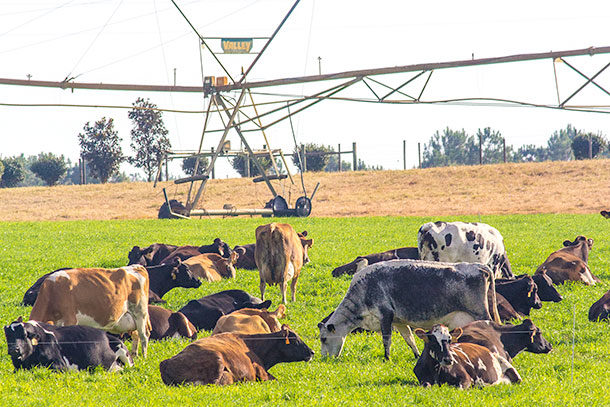Nitrogen (N) plays a key role in growing healthy, productive pastures. It is often the most limiting nutrient in grasses. Adding N fertilizers to pastures is one approach to boost productivity. While many fertilizers contain N, which formulation supplies the best yield and economic returns on irrigated pasture?Ammonium nitrate is an N source that has been around for a long time. Agriculture has valued this product for its low volatilization/denitrification (N loss) potential and relatively low cost. Since ammonium nitrate has been used in making explosives, it has become difficult to buy. Growers need a reliable alternative.
Urea is a cheap and widely used form of N, but it can be very susceptible to losses (volatilization and denitrification). Up to 50% of N can be lost when urea is applied under adverse conditions. Either a ½-inch of irrigation or precipitation after applying urea will incorporate N into the soil and reduce the risk of volatilization. New N fertilizers are using technology to try to reduce losses. SuperU is a form of urea fertilizer that has added nitrification and denitrification inhibitors before being processed into prills. This creates an N fertilizer that is protected from losses.
Environmentally safe nitrogen (ESN) is another new fertilizer. ESN is a urea granule that has been coated in a polymer, which allows the prill to release N over time. These new technologies are designed to reduce losses, but both come at an increased price. The additional cost does not pay for additional nitrogen; instead, it allows you flexibility in your application. When considering which form of commercial N fertilizer to use, price and productivity must be considered.
In 2019, we conducted an experiment in Chesterfield, Idaho, on irrigated meadow brome (Bromus biebersteinii) pasture. Adequate irrigation water was available during the growing season. The following N fertilizers were applied: ammonium nitrate, urea, SuperU, and ESN at the rates of 0, 60, and 120 units of N per acre (Table 1). Each treatment was replicated four times. Plots were fertilized on May 9. We did not have a rain gauge on site, but we estimate the plots received ½ inch of rain within three days of application. Plots were harvested on June 13, Aug. 7 and Sept. 27 by cutting a 2-by-20-foot swath out of the middle of each plot.
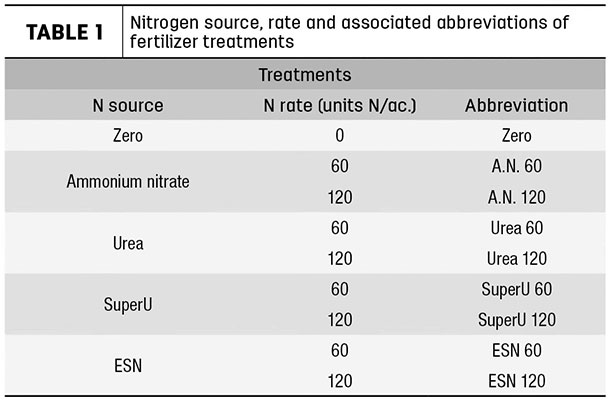
Results indicated that all N sources produced similar yields, except for the “ESN 60” treatment, which produced significantly less. The “zero” treatment produced 850 pounds of dry matter per acre. When 60 units of N were applied (regardless of source, besides ESN 60) yield jumped to about 2,100 pounds of dry matter per acre. When the N rate was increased to 120 units of N per acre, another small increase in yield was observed, regardless of N source (Figure 1).
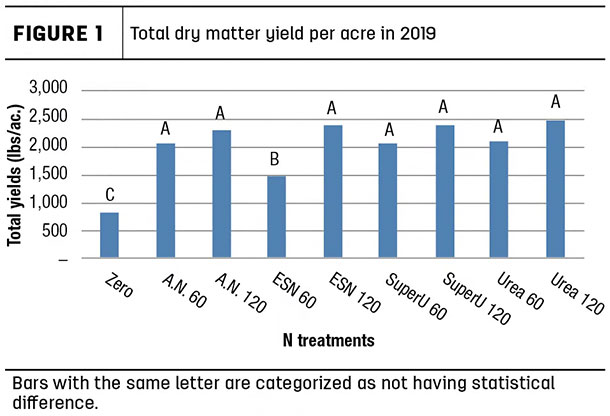
While the source of N had little effect on yield, the cost of the various fertilizers had a significant effect on economic return. Yield results and fertilizer prices (Table 2) were used to calculate economic returns of each fertilizer treatment.
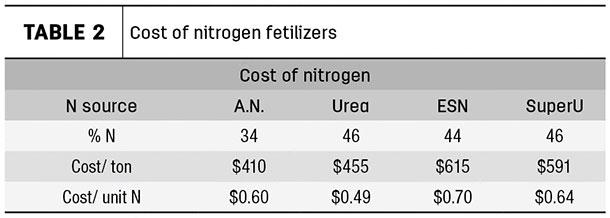
Economic returns have been represented as “dry matter produced per dollar spent on N” (Figure 2). Results indicated that urea at a moderate rate (60 units N per acre) produced about 42 pounds of dry matter per dollar that was spent on N. Ammonium nitrate and SuperU at 60 units N per acre were not far behind, with ammonium nitrate producing 34 pounds per dollar and SuperU producing 32 pounds per dollar. Because of the high costs of ESN and its slightly lower yields, dry matter produced per dollar spent is significantly reduced.
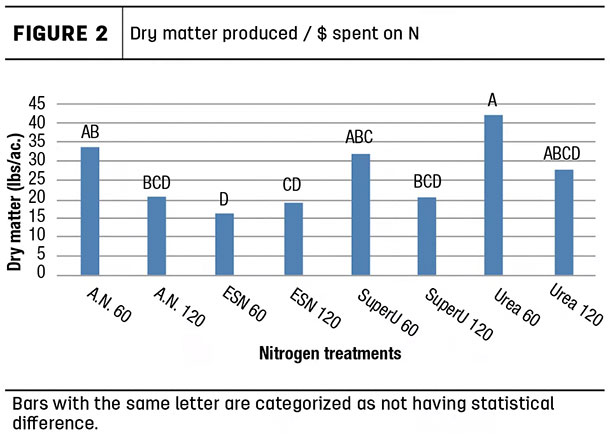
From this experiment, it can be inferred that urea is a great choice for irrigated pastures, if irrigation is applied or precipitation is received soon after fertilizer application. If you are not able to irrigate or time fertilizer application prior to a precipitation event, a product like SuperU might be a good alternative. ![]()
PHOTO: Nitrogen is key to healthy irrigated pastures, but not all fertilizers are equal. Photo by Lynn Jaynes.
Justin Hatch, Bracken Henderson and Joseph Sagers are with the University of Idaho Extension. Email Justin Hatch.
